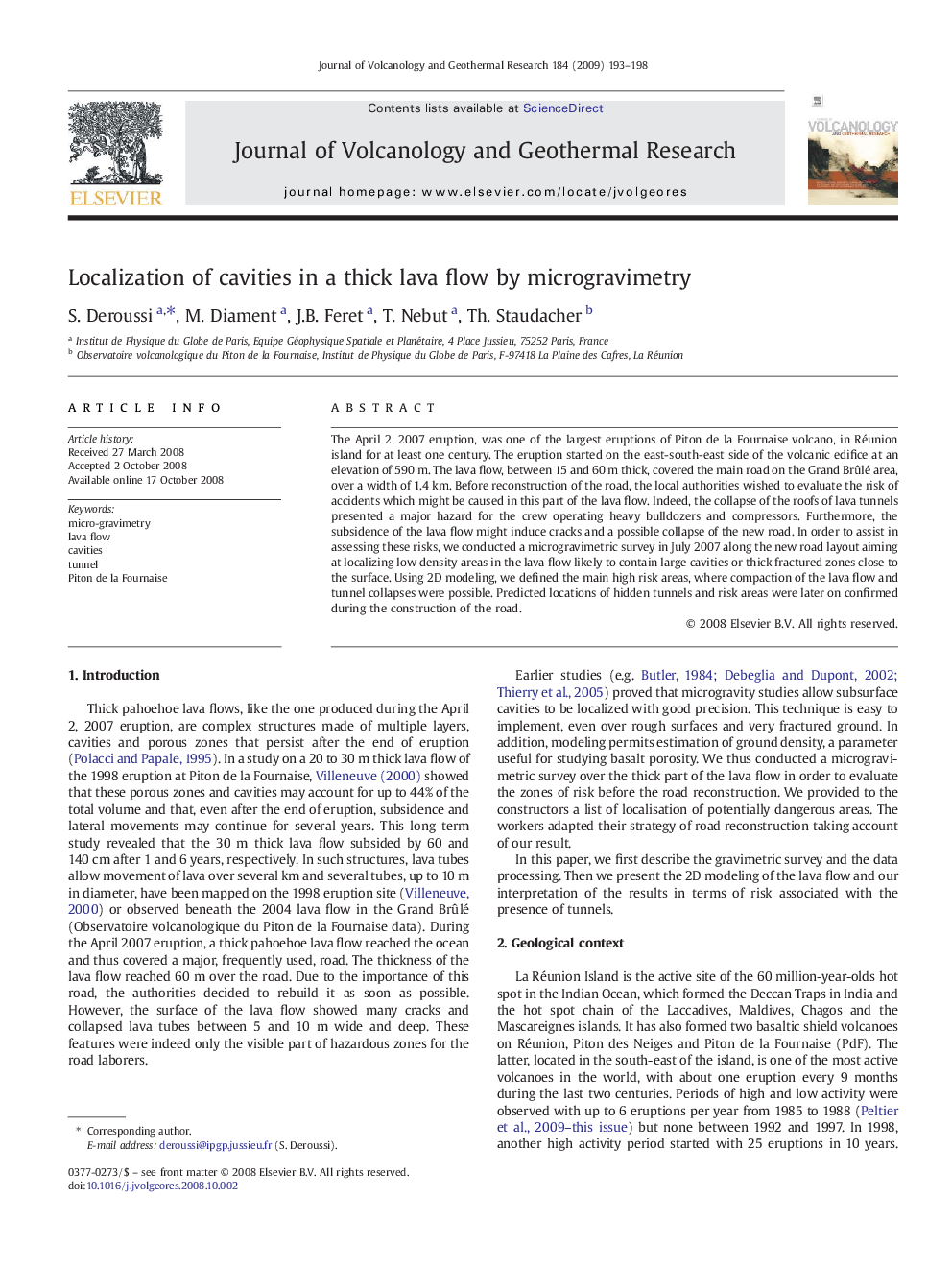| Article ID | Journal | Published Year | Pages | File Type |
|---|---|---|---|---|
| 4713283 | Journal of Volcanology and Geothermal Research | 2009 | 6 Pages |
The April 2, 2007 eruption, was one of the largest eruptions of Piton de la Fournaise volcano, in Réunion island for at least one century. The eruption started on the east-south-east side of the volcanic edifice at an elevation of 590 m. The lava flow, between 15 and 60 m thick, covered the main road on the Grand Brûlé area, over a width of 1.4 km. Before reconstruction of the road, the local authorities wished to evaluate the risk of accidents which might be caused in this part of the lava flow. Indeed, the collapse of the roofs of lava tunnels presented a major hazard for the crew operating heavy bulldozers and compressors. Furthermore, the subsidence of the lava flow might induce cracks and a possible collapse of the new road. In order to assist in assessing these risks, we conducted a microgravimetric survey in July 2007 along the new road layout aiming at localizing low density areas in the lava flow likely to contain large cavities or thick fractured zones close to the surface. Using 2D modeling, we defined the main high risk areas, where compaction of the lava flow and tunnel collapses were possible. Predicted locations of hidden tunnels and risk areas were later on confirmed during the construction of the road.
